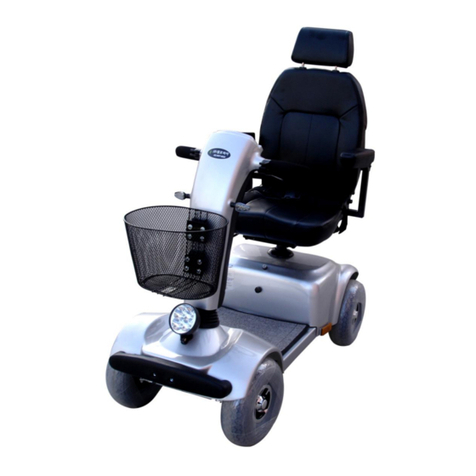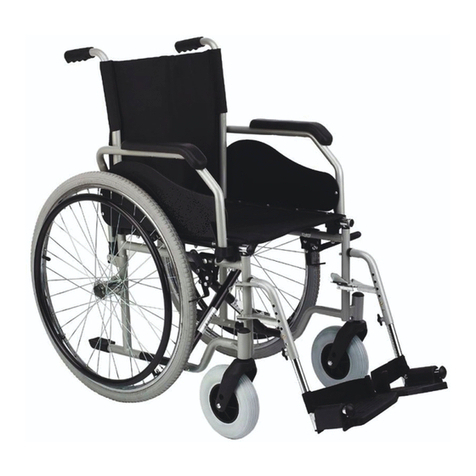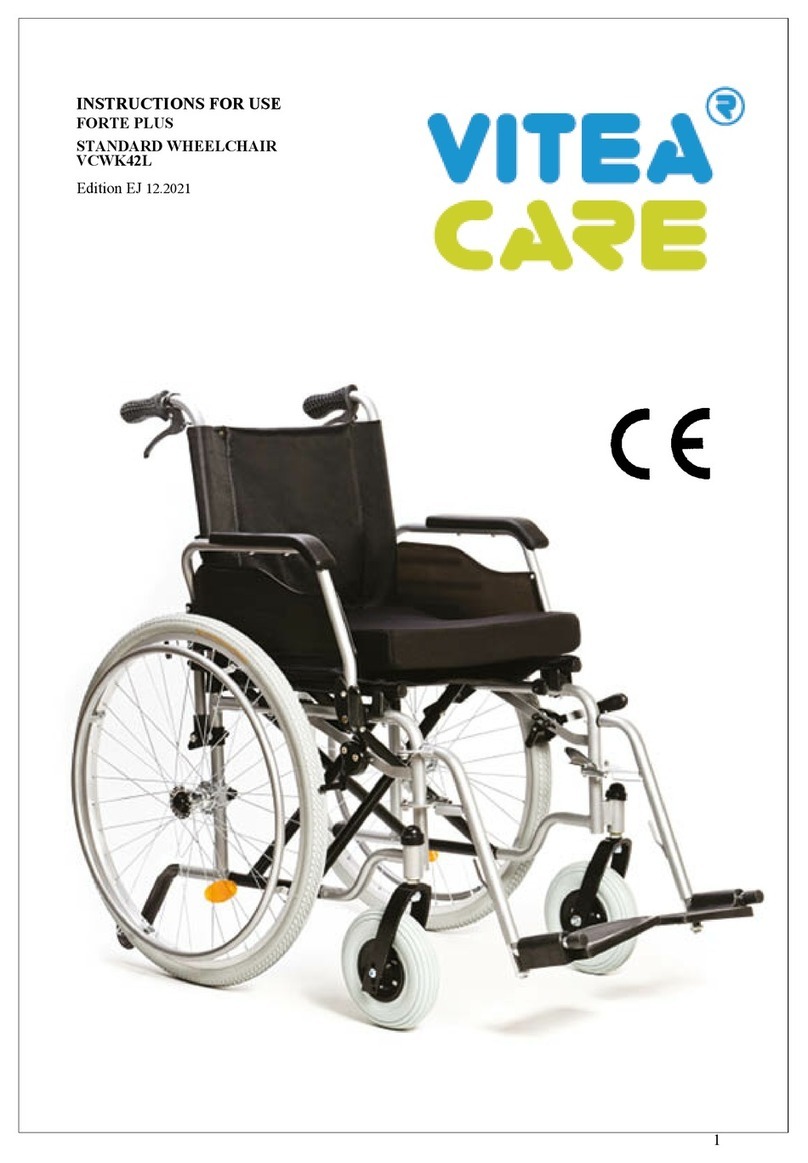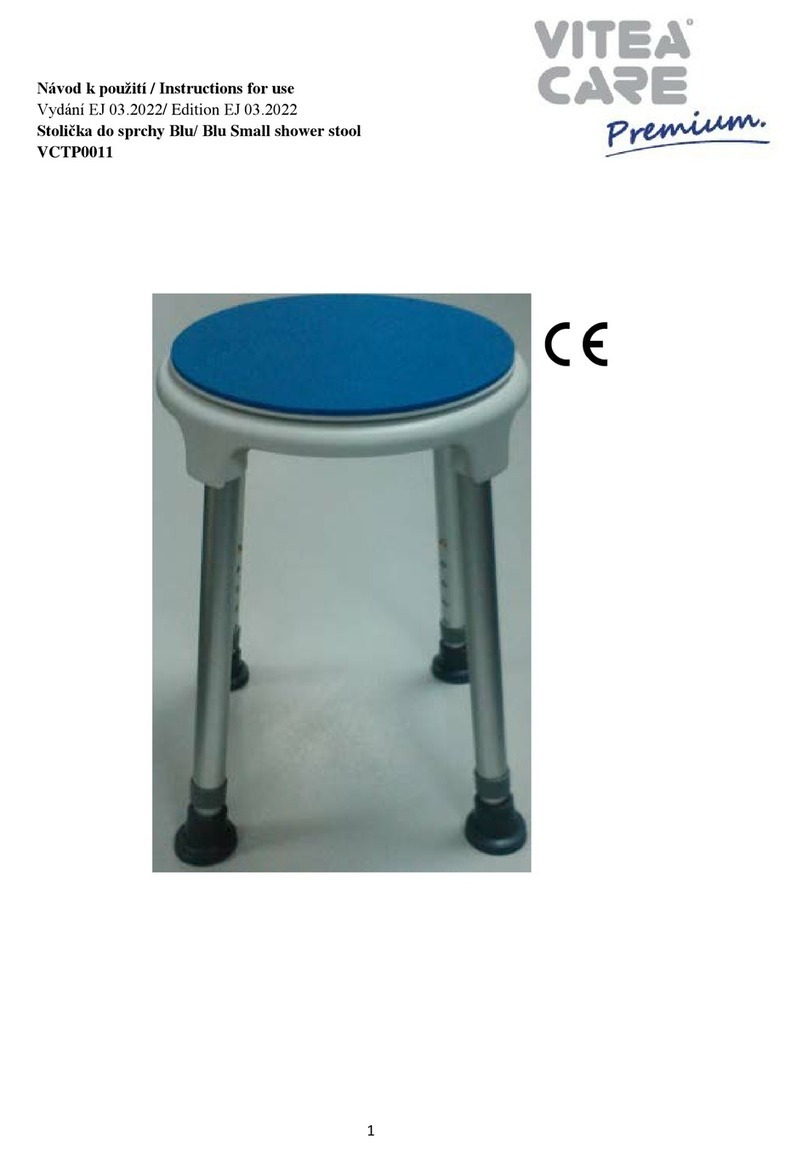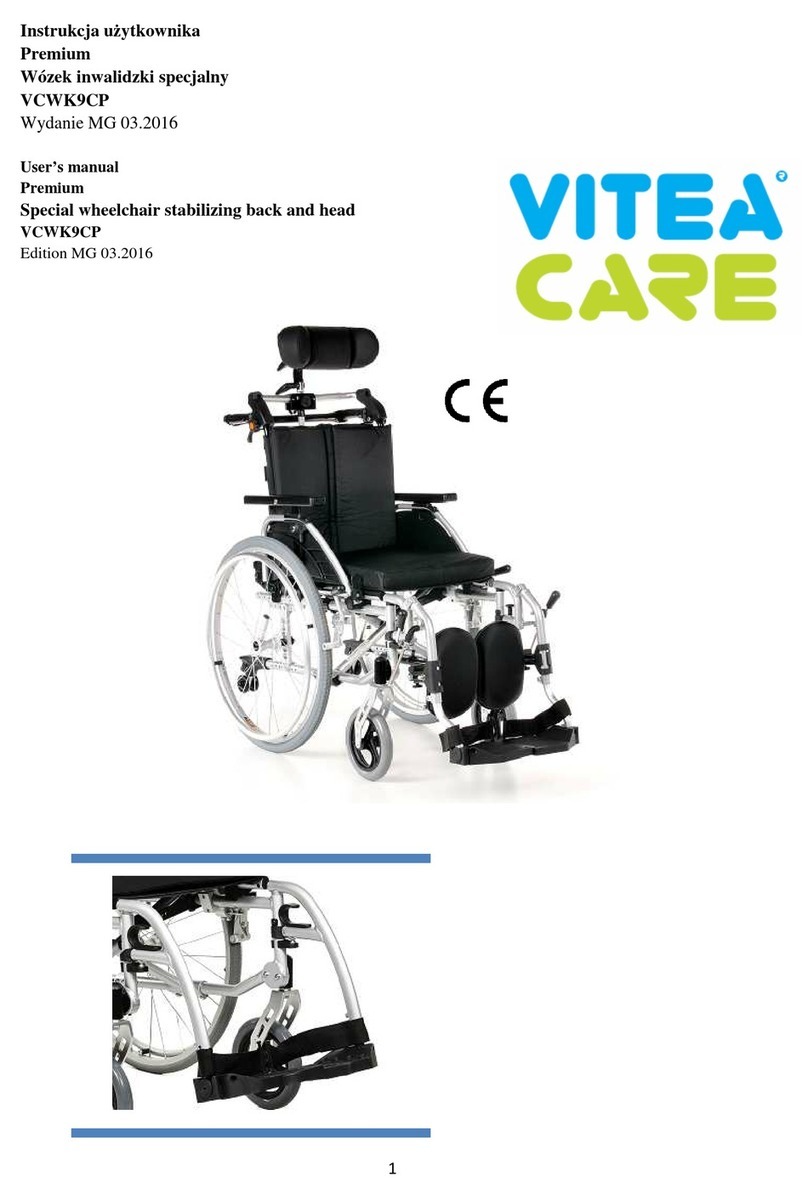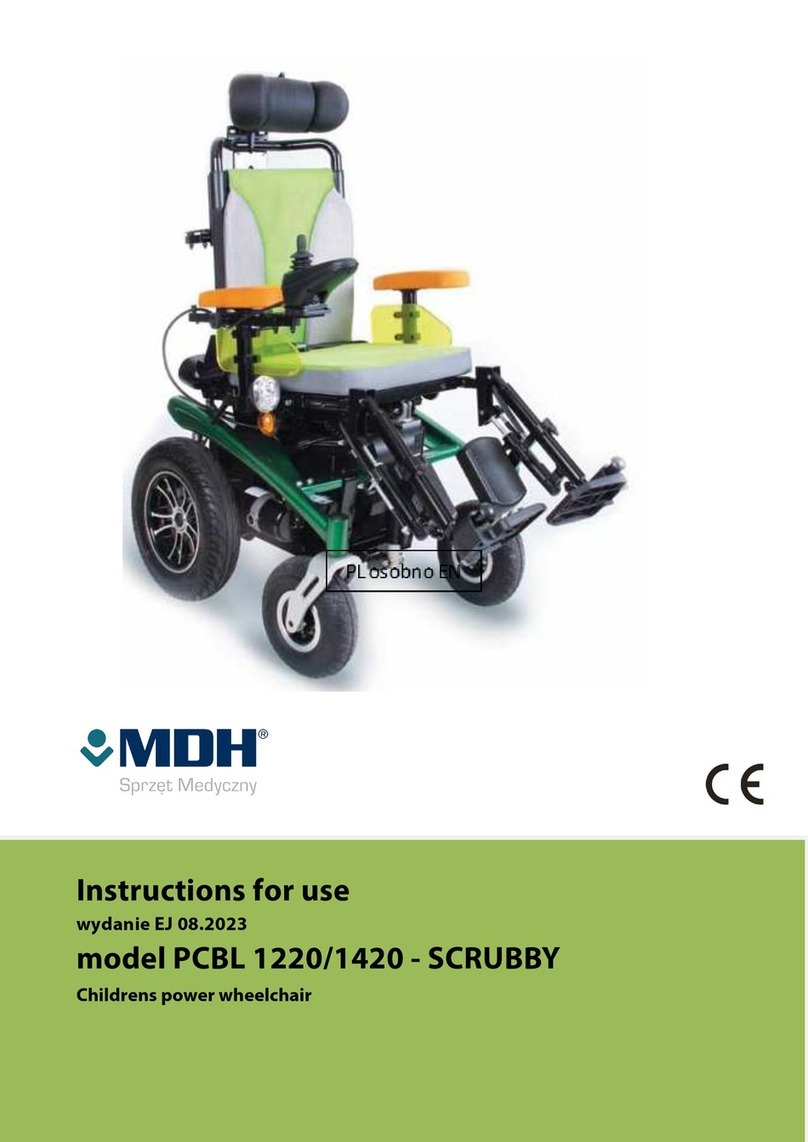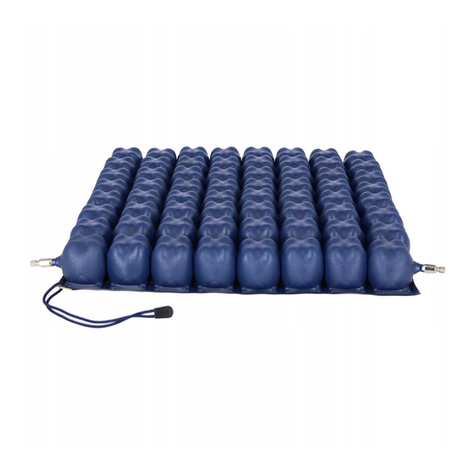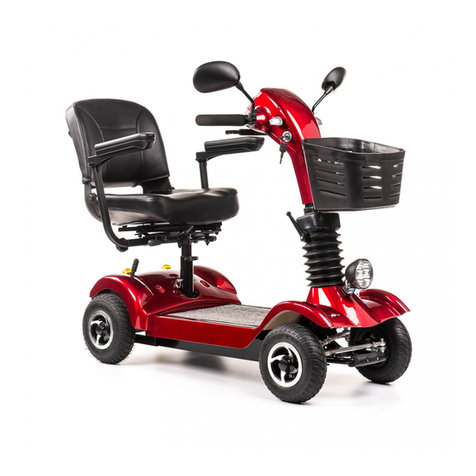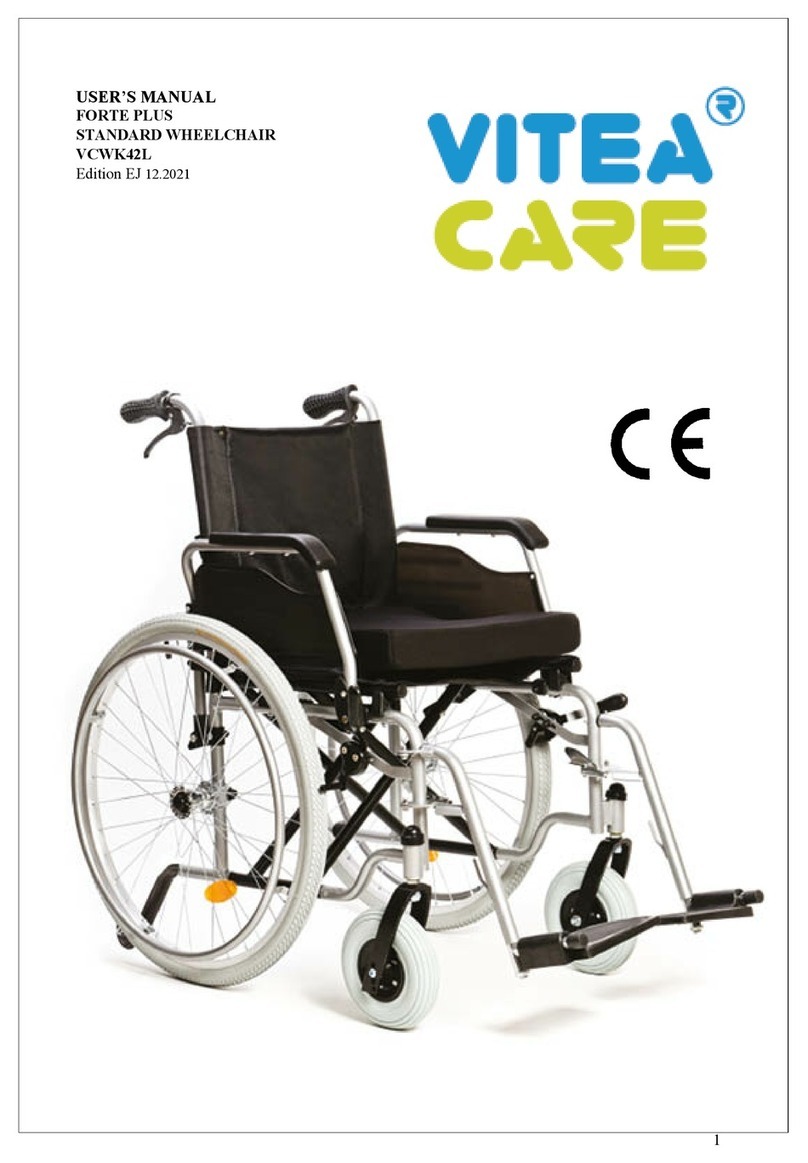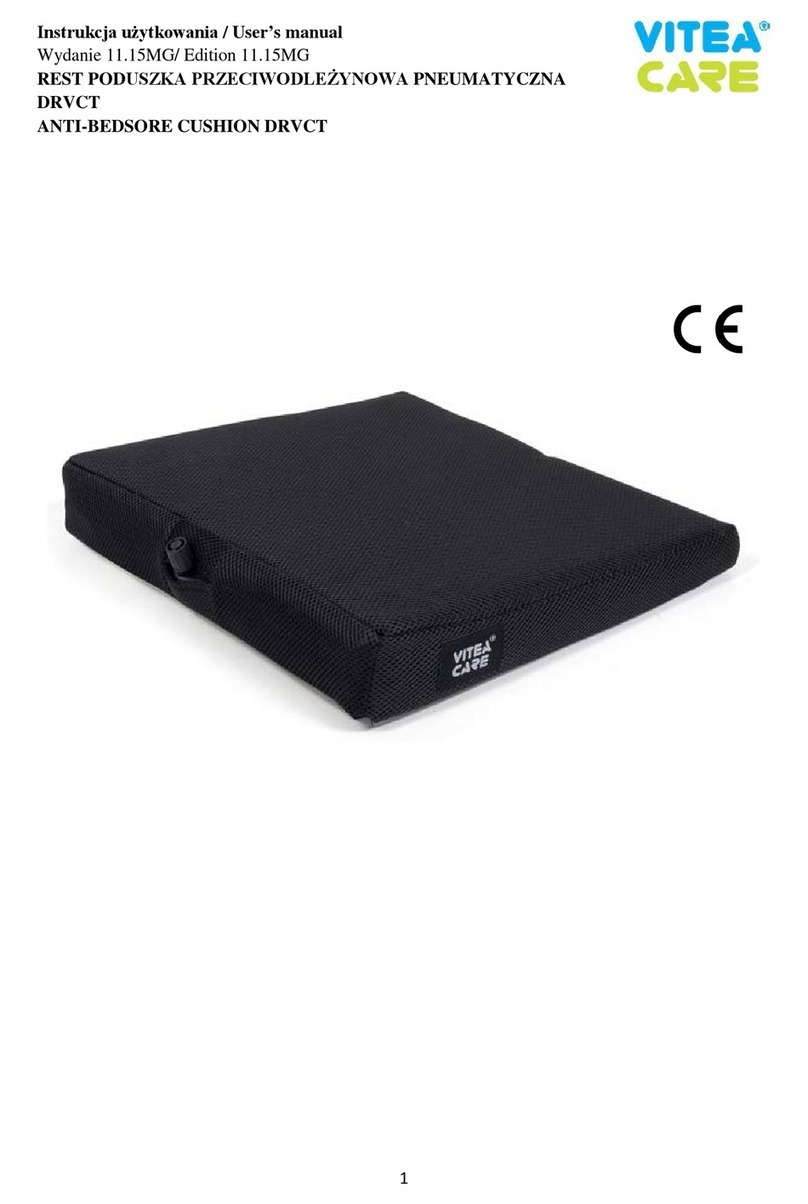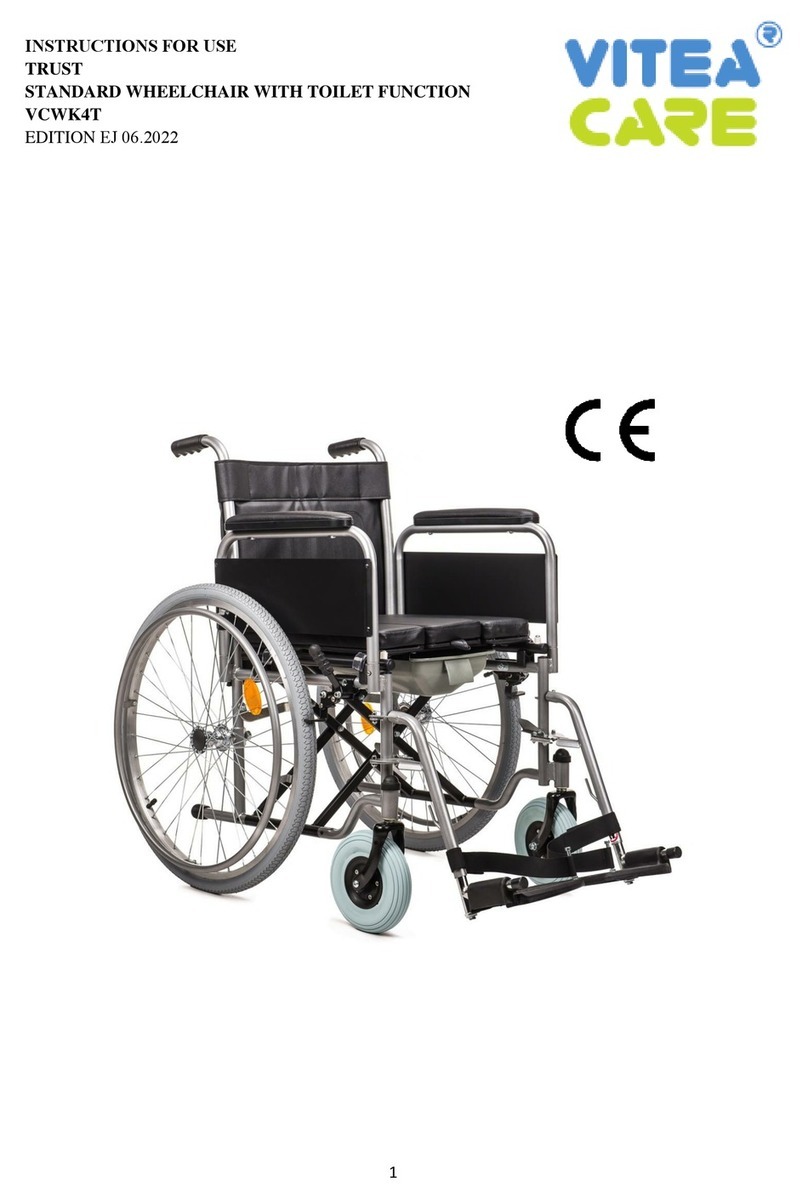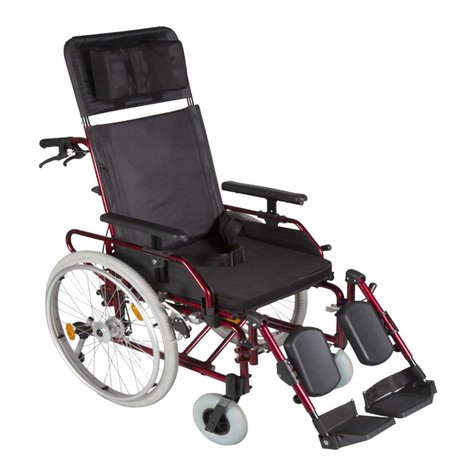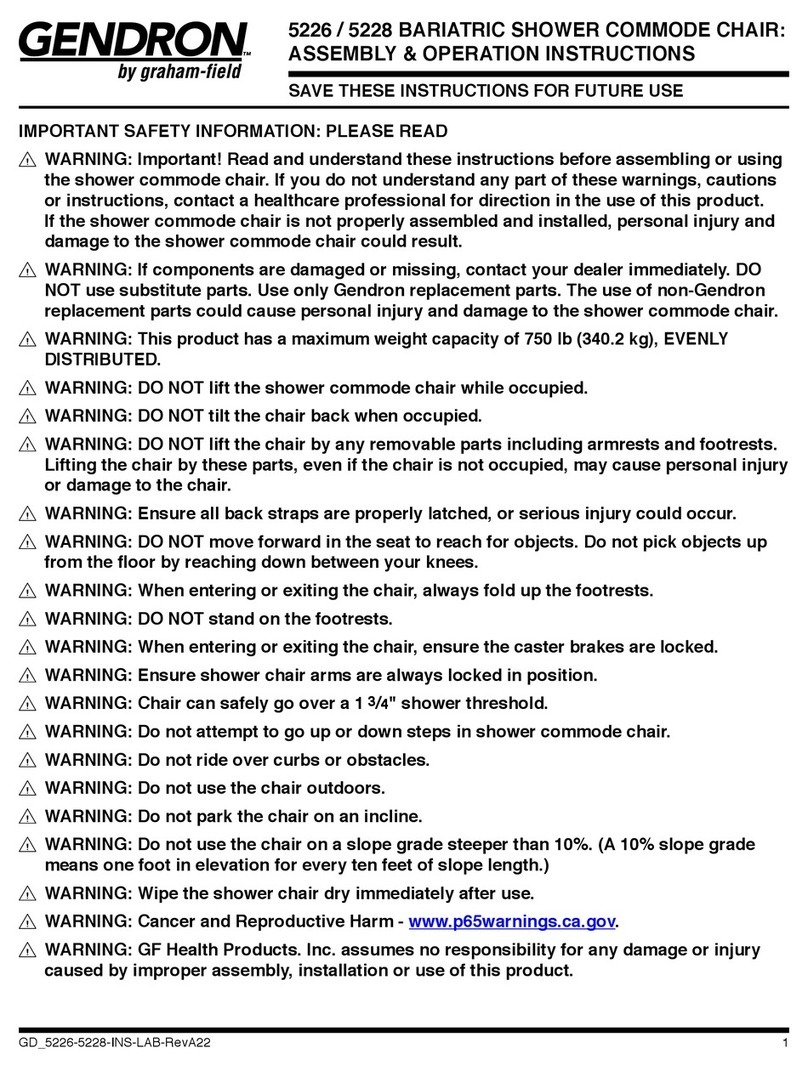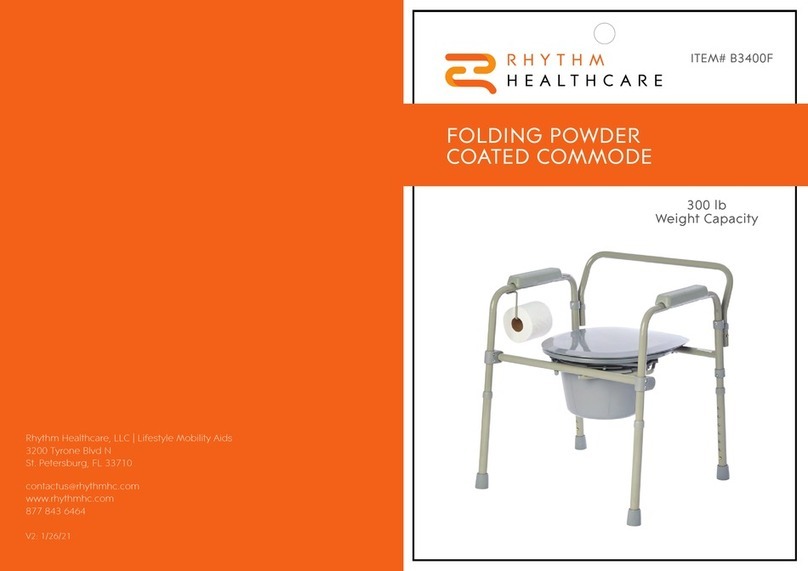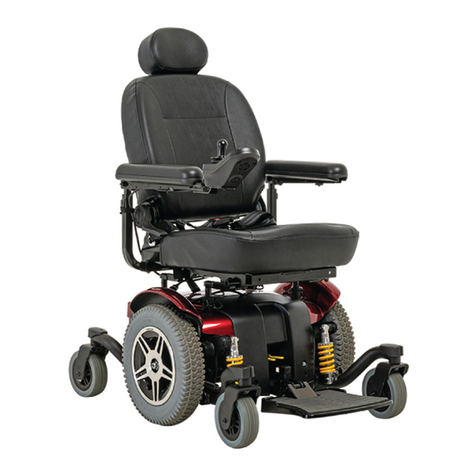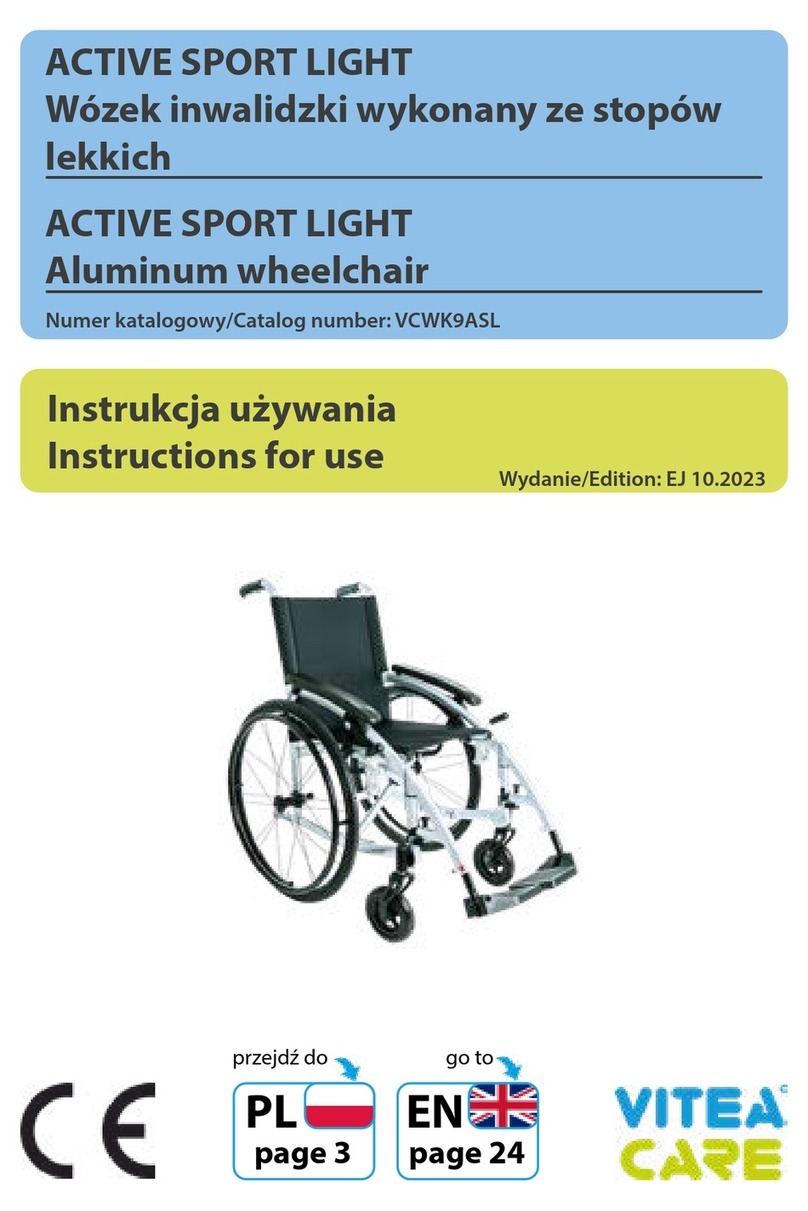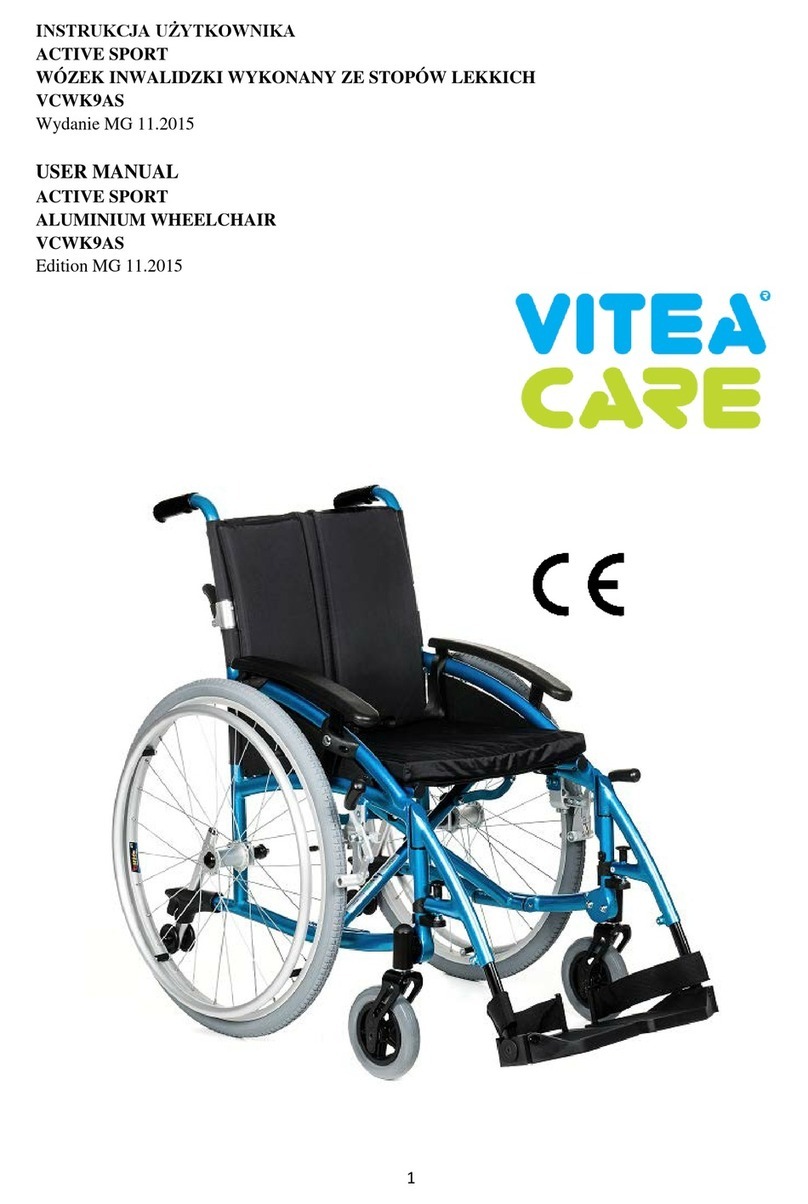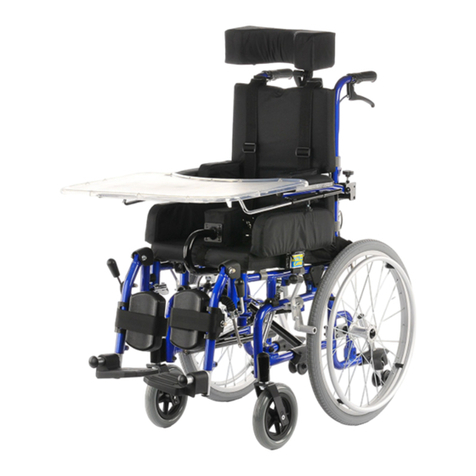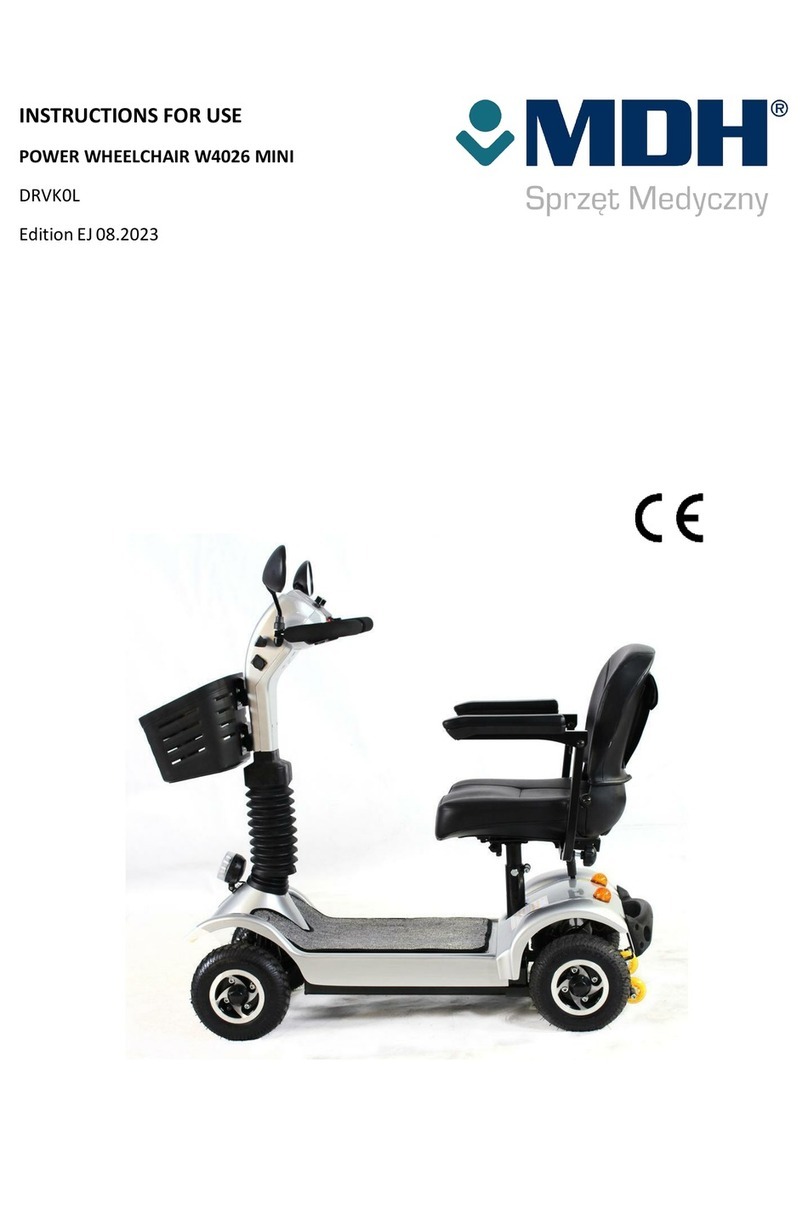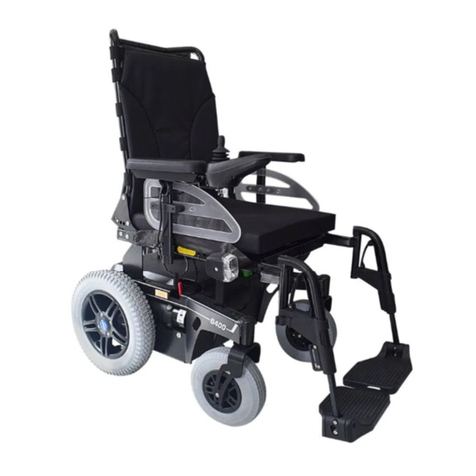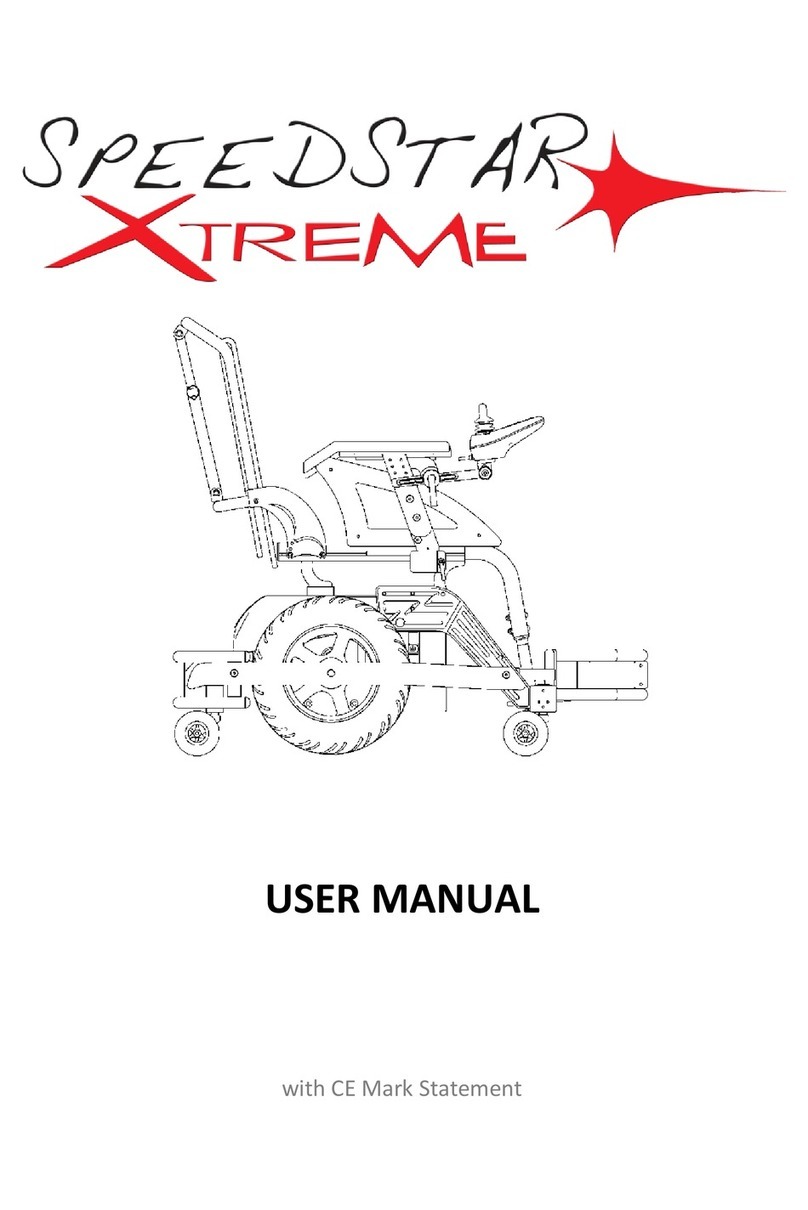To może być przyczyną oparzenia lub
odmrożenia części ciała.
m) Wózek należy przenosić chwytając za
konstrukcję ramy. Nigdy nie należy
przenosić wózka za podłokietniki lub za
podnóżki.
n) Wózek przeznaczony jest dla osób o wadze
do 130 kg.
o) Wózek powinien zawsze dać się łatwo
składać i rozkładać. W przypadku
problemów ze złożeniem należy ponownie
zapoznać się z instrukcją, lub skontaktować
się z wytwórcą.
p) Poruszając się po powierzchniach
pochyłych należy zachować szczególną
ostrożność. Maksymalne kąty nachylenia
podłoża w górę i w dół wynoszą 5%.
q) Hamulce nie służą do spowalniania wózka
w trakcie ruchu, należy ich używać
wyłącznie aby nie dopuścić, do
niepożądanych ruchów wózka.
r) Podczas podnoszenia przedmiotów z
podłogi należy unikać wychylania się z
wózka, ponieważ grozi przewróceniem się.
s) Nie należy używać wózka w przypadku
stwierdzenia
jakichkolwiek widocznych
lub wyczuwalnych
uszkodzeń (np.
pęknięcie ramy) gdyż grozi to
wypadkiem.
t) Należy przed każdym użytkowaniem,
wykonać
przegląd wizualny wszystkich
elementów
konstrukcyjnych wyrobu w
tym:
- Sprawdzić działanie systemu
hamulcowego. Hamuje się przez
naciśnięcie hamulca stopą.
- Dokładnie sprawdzić stabilność i stan
ramy nośnej
u) Wszelkie czynności takie jak wsiadanie,
zsiadanie, zmiana pozycji pacjenta,
czynności toaletowe BEZWZGLĘDNIE
wymagają:
- Stałej pomocy opiekuna, konstrukcja
wózka nie daje pacjentowi możliwości
kierowania i napędzania wózka, oraz
zablokowania lub odblokowania
hamulców.)
- Zablokowania hamulców kół jezdnych.
m) In order to transfer wheelchair, grab the
frame. Never transfer the wheelchair by
grabbing the armrests or footrest
n) The wheelchair is designed for people
up to 130 kg.
o) Wheelchair must be easy to fold and to
unfold. In case of problems with
folding, you should re-read the
instruction or contact the manufacturer.
p) Keep caution while moving on sloping
surfaces. The maximum allowable slope
angle up and down is 5%.
q) Brakes cannot be slow down wheelchair
during ride, You should use them only
to prevent the unintended movements.
r) While reaching objects, avoid excessive
leaning out the wheelchair because it
can cause a fall (to the side, front,
back).
s) Do not use the wheelchair in case of
any visible or palpable damage (eg.
breakage of the frame) because it may
cause an accident.
t) Before every use, should perform a
visual inspection of all structural
components of the product including:
-Check the operation of the braking
system. Brake by pressing the brake
foot.
-Carefully check the stability and
condition of the support frame
u) Any activities such as getting in, getting
off, changing the position of the patient,
the toilet operations MANDATORY
require:
-Constant help caretaher, wheelchair
design does not give the patient the
possibility of directing and driving
the whellchair, and lock or unlock
the brakes.
-Blocked brakes.
v) Do not leave the patient in the
wheelchair (even with turned on both
brakes) on the descents, ramps,
landings, etc.
w) It is extremely important to keep all
wheelchairs components clean in order
to maintain the product parameters.












